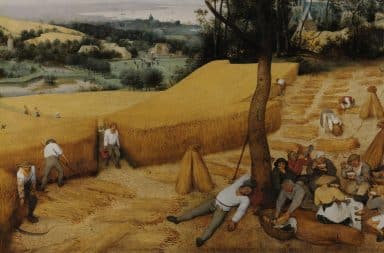The following are brief snippets of the soon-to-be-published biography of Barky Malone, one of the most influential jazz musicians of all time. His brilliance was unrivaled. He played many instruments: the saxophone, the clarinet, the drums, cello, bass, piano (sometimes all of them simultaneously).
The book finds itself embroiled in controversy, stemming from the fact it was written in utter secrecy. Nobody knew it was being written, not even its author, Jodie Needlemeyer, who thought she had been writing a biography of Genghis Khan.
Part One: The Early Years
Barky was born in 1933 and had a fairly typical childhood. He was very idealistic, often telling relatives he wanted to study medicine so he could practice acupuncture on penguins.
Barky lived with his mother and father, both of whom were named Harold. For the rest of his life, Barky kept getting them mixed up, and historians believe this is where his music's obsession with identity came from.
Although Barky Malone was a moderately happy child, he did have some psychiatric issues. The book mentions a reoccurring nightmare of his, where Bigfoot would chase him across an endless plain, demanding he fill out a brief survey.
Barky was a very rambunctious student. In kindergarten, he was fully immersing himself in the historiography of the Sino-Japanese War, Precambrian fossils, and the collected works of William Shakespeare. We now know that Barky was using his scholastic achievements to mask the fact he was horribly addicted to eating Play-Doh.
Part Two: The Adolescent Years
Barky Malone entered his rebellious phase. He picked fights with everybody, even the neighbor's pet parrot.
He became politically active. In 1952 he officially joined the Whig Party and campaigned for John Quincy Adams, who'd been dead for over 100 years. This created tension within the family, especially with Harold. (Barky never did find out which one.)
Barky was still developing musically. By high school, he began playing the drums. After two years, his proficiency improved considerably once he started using actual drumsticks instead of ice cream drumsticks.
Part Three: The Wilderness Years
The next chapter delves into Barky's so-called wilderness years. After conducting many in-depth interviews, the author concludes that Barky's wilderness years were not metaphorical - –Barky was literally lost in the wilderness of Minnesota.
Part Four: The Big Time
Barky finds success in New York City. His first two singles, “My Baby's Big Toe,” and “Oh, God, My Anxiety is Crippling,” reach national audiences on the radio.
His personal life makes headlines when his addiction to Play-Doh becomes public. Later, he's arrested for carrying spoiled hummus over state lines and eventually checks into rehab.
Part Five: Downfall
It's hard to say what contributed most to Barky's eventual downfall. The book suggests it likely had something to do with the fact he died suddenly at the age of 32 in a horrific accident that involved an unplugged pencil sharpener, a cheese plate, and a Canadian Goose named Reginald.
The Unauthorized Biography of Barky Malone. Available wherever books and/or DVD copies of “Laguna Beach” are sold. $19.85


